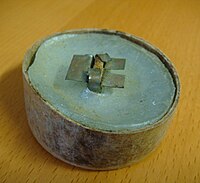Hindenburg light

Hindenburg light is a type of light that is named after the famous airship disaster that happened in 1937. It is called this because it looks similar to the flame that was seen when the Hindenburg airship caught fire and crashed to the ground.
To understand what hindenburg light is, you need to understand a bit about fire. Fire needs two things to burn: heat and fuel. The heat comes from a source like a match or a lighter, and the fuel is whatever is being burned. When the heat from the source is applied to the fuel, it causes a chemical reaction that creates the flame.
Hindenburg light is created when there is a lot of fuel and not much heat. This can happen when a fuel source, like gas or oil, is released into the air in a controlled way. When this happens, the fuel mixes with oxygen in the air and creates a flame, but the flame is not very hot because there is not a lot of heat from a source like a match or a lighter.
The flame created by hindenburg light can look different from other flames. It is often long and thin, almost like a ribbon, and can be different colors depending on the type of fuel used. One common use of hindenburg light is in special effects for movies or stage productions. It can be used to simulate a fire without the danger of a real fire.
Overall, hindenburg light is a type of flame that is created when there is a lot of fuel and not much heat. It gets its name from the famous airship disaster, but it is used in many different ways, including in special effects for movies and stage productions.
To understand what hindenburg light is, you need to understand a bit about fire. Fire needs two things to burn: heat and fuel. The heat comes from a source like a match or a lighter, and the fuel is whatever is being burned. When the heat from the source is applied to the fuel, it causes a chemical reaction that creates the flame.
Hindenburg light is created when there is a lot of fuel and not much heat. This can happen when a fuel source, like gas or oil, is released into the air in a controlled way. When this happens, the fuel mixes with oxygen in the air and creates a flame, but the flame is not very hot because there is not a lot of heat from a source like a match or a lighter.
The flame created by hindenburg light can look different from other flames. It is often long and thin, almost like a ribbon, and can be different colors depending on the type of fuel used. One common use of hindenburg light is in special effects for movies or stage productions. It can be used to simulate a fire without the danger of a real fire.
Overall, hindenburg light is a type of flame that is created when there is a lot of fuel and not much heat. It gets its name from the famous airship disaster, but it is used in many different ways, including in special effects for movies and stage productions.
Related topics others have asked about:
